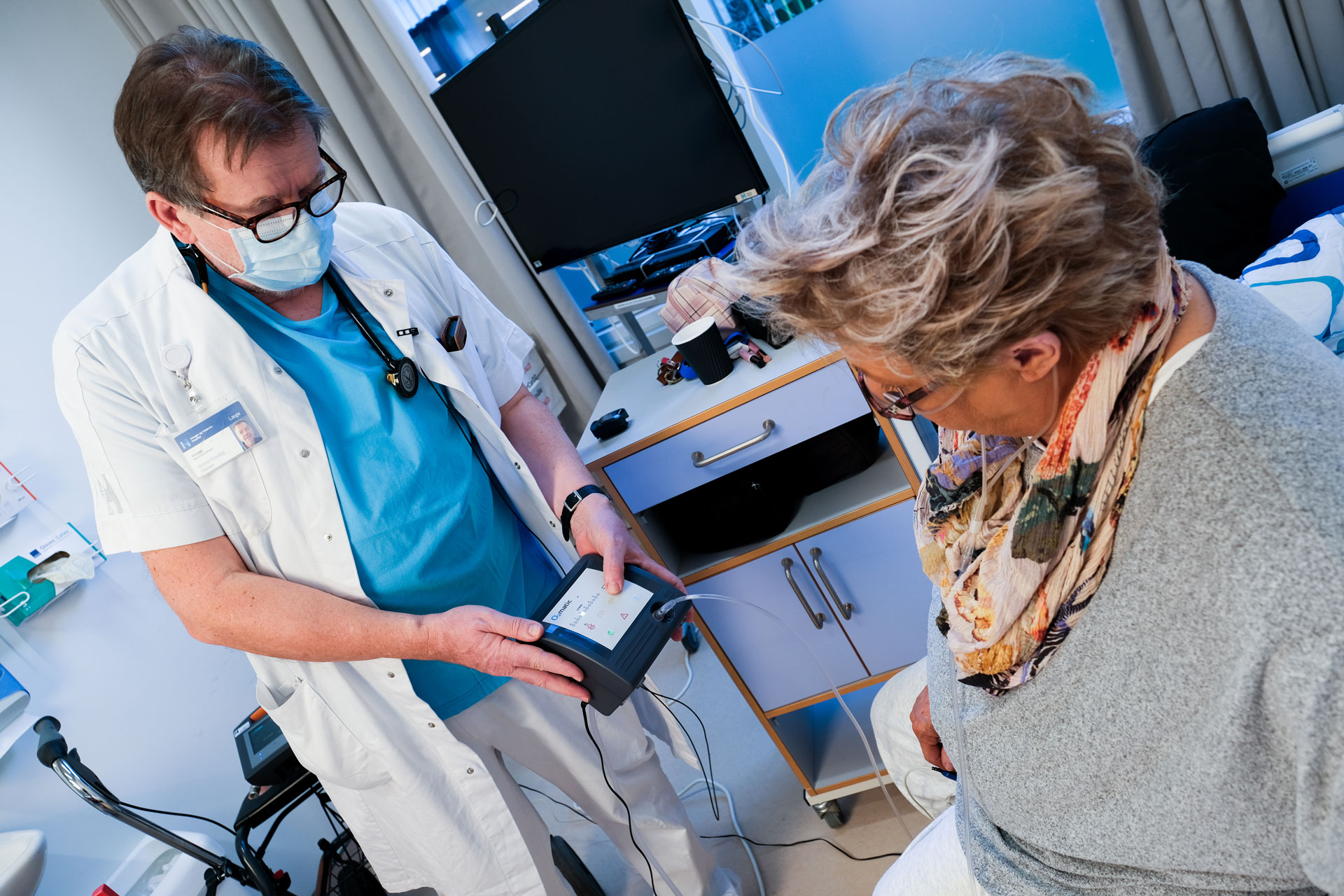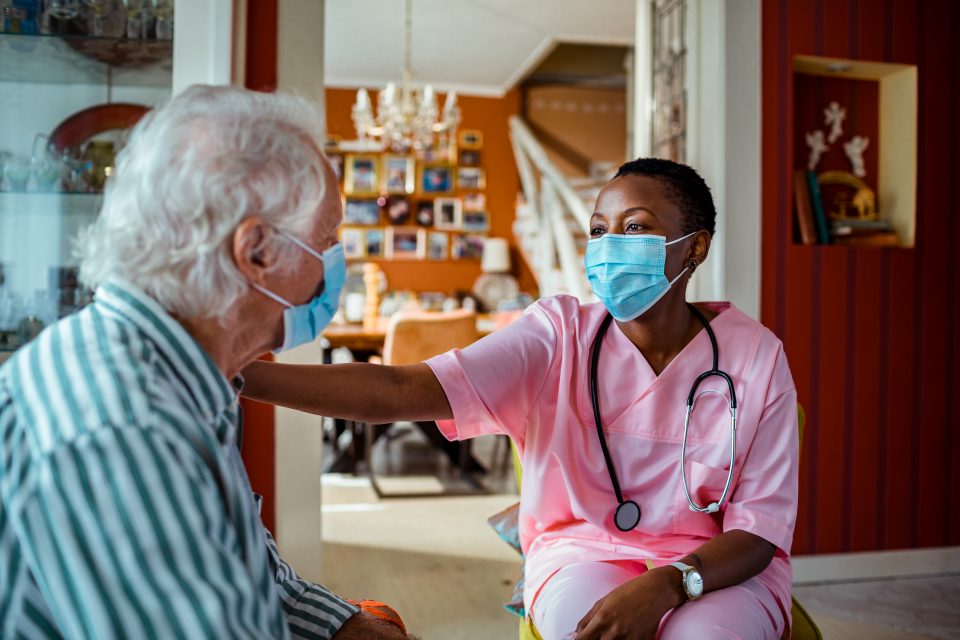By Elena Bonfiglioli, EMEA healthcare and life sciences lead
As the year draws to a close it’s a natural time to reflect. For many of us, 2021 was (another) year characterized by uncertainty. But one group in particular has dealt with unprecedented challenges: our healthcare workers. Fittingly, the World Health Organization dubbed 2020 the Year of the Nurse and 2021 the Year of Health & Care Workers in honor of these real-life heroes who walk among us.
The impact of COVID‑19 on our society has brought public health to the top of the policy agenda. It highlighted the need to consider the resilience of health systems as an equally important measure of performance alongside accessibility, equity, quality of care and efficiency.
And time is the scarcest resource as health systems face exponential demand for care due to the combination of health crisis, syndemic context and changing demographics.
To address this challenge, our reflection goes to what we can uniquely do to make time grow, alleviating the pressure and liberating productivity so that there is more time to care.
Even as we look forward to turning the corner on the pandemic, health services will remain under significant pressure dealing with a syndemic, and with extended waiting lists for diagnosis and treatment. This includes a flux of patients with pre-existing conditions that may have gone undiagnosed and untreated.
“… the pandemic has created a void in which other diseases are left potentially undiagnosed and untreated. This means we now face a syndemic – the convergence where epidemic clusters and interacts with pre-existing conditions. The fact that people living with heart disease and its underlying CV risk factors have a higher risk of severe COVID-19 has made this convergence visible.” – Devex piece co-authored by Dr. Ann Aerts, Dr. Fausto J. Pinto, Elena Bonfiglioli
On top of this is the growing challenge of an ageing population. According to the European Commission, one in four Europeans will be 65 or older by 2030 – and 40% of people in this age group typically live with at least two chronic medical conditions. Chronic obstructive lung disease (COPD) – which already affects more than 300 million people worldwide – will become the leading cause of death in the next 12 years.
The resilience of health systems will ultimately come down to the ability of healthcare professionals to cope with the demands placed on them. From my own relationships I know these professionals have always had some days when they work to their limits. But since the beginning of the health crisis, this characterizes what their ‘normal’ days are like.
So how do we help alleviate the pressure and create more time to care?
One key part of the solution is augmenting health professionals with innovation that actually helps ‘time grow:’ streamlining administration; automating certain tasks; easing the demands around data entry; automating some processes while retaining control; and enabling more effective consultations. Ultimately, this lets frontline workers focus on what they do best: care for patients. It also helps ensure they have the time they need to unplug and look after their own well-being.
Dr. Eric Topol, cardiologist and author of Deep Medicine noted this eloquently after working extensively with AI-powered tools: “I realized that as you can augment human performance at both the clinician level and the patient level, at a scale that is unprecedented, you can make time grow.”
And we’ve seen amazing real-world examples of this from across Europe as health care systems have accelerated their digital journeys.

Realtime monitoring, predicting and intervention – keeping patients healthy and out of hospital
Health systems around the world have an opportunity to embrace data-led strategies that emphasize prevention. This is critical in terms of protecting staff, bolstering efficiencies and improving the quality of patients’ lives. As McKinsey notes in its global report Prioritizing health: A prescription for prosperity, “Our research suggests that two-thirds of the improvement opportunity [in Europe’s healthcare systems] lies in areas of health promotion, prevention, health literacy, and healthier environments…”
Cova da Beira Hospital in Portugal provides a tangible example of what is possible.
The hospital developed a platform that allows doctors to remotely monitor vulnerable patients with chronic conditions – keeping a watch on key variables like blood pressure and weight. AI-powered tools can actually spot early trouble signs and can alert doctors when new pre-emptive measures might be taken.
Dr. Luís Oliveira described the deployment: “It helps the patient to feel very active in their own care—we see greater adherence to prescribed medication treatments and to a healthy lifestyle. It also provides a constant link and source of communication between the patient and the department, which in turn helps them feel safe and more comfortable.”
This approach has resulted in a dramatic reduction in patients needing to visit the hospital. The numbers truly speak for themselves with an 85% reduction in visits to emergency departments and a 62% reduction in hospital admissions.
Coala Life has developed technology that allows physicians to remotely detect warning signs from the heart and lungs as patients go about their daily lives – helping ensure early intervention. The ability to stay on top of arrhythmia in this manner saves time for cardiologists, nurses and patients alike. Further, as patients know they are being looked after in real time, many report reduced anxiety. This a huge benefit for promoting mental health. Also, as prolonged anxiety can take a huge toll on our bodies, it has a physiological benefit too.

Increasing bandwidth without lengthening the workday
Telemedicine has been an idea bandied about for years. But, we really saw it come of age since the start of the pandemic as health systems pivoted to keep both patients and staff safe.
The Helsinki and Uusimaa Hospital District in Finland provides remote health services in combination with traditional, in-person medical care. Its Virtual Hospital supports holistic care for patients – integrating services like mental health and addiction counseling. As these are contributing factors to chronic illness like heart disease it’s vital to address them to keep people healthy and out of hospital.
The hybrid approach is ideal for patients and allows healthcare workers to help more people without an increase in the length of their working day. For example, psychotherapists can treat 3x more patients and therapists in the weight control program are able to work with up to 5x more clients.
“With this hybrid approach, where virtual health services and physical, face-to-face services are intertwined, we can treat more patients than ever before.” – Visa Honkanen, Director of Strategic Development for Helsinki University Hospital
Technology company Telemedico is reimagining the value telemedicine can offer both clinicians and patients. Its technology lets doctors offer secure video calls or chats with patients, but is also designed to strengthen their relationship. Before the appointment, AI-powered tools analyze patient data and provide the doctors with insights around possible diagnosis, treatments and referrals. This helps doctors make the best use of their time with each patient. Doctor Tomasz Grzelewski noted: “The efficiencies created by using AI have given me more time to talk and get to know my patients better.”
Another important way health systems are giving frontline workers more bandwidth is by using innovation to lighten the burden of administrative tasks. Capturing patient data – whether it’s their vitals, medications, lifestyle characteristics – is clearly essential in terms of ensuring the best care. However, it has always been a challenge for frontline health staff to fit this in within the normal set hours of the workday. The need for accuracy coupled with the complex terminology requires attention and time — time that otherwise could be spent with patients, or time that could be spent resting and recharging.
New tools help take on this task, acting much like an invisible digital secretary, capturing all important information reviewed during patients visits – safely and securely. According to Nuance, this can reduce a doctor’s time spent on documentation by six minutes per patient.
Well, what does that mean exactly?
For cardiologists, it can mean up to a 24% increase in the number of patients they can see in a day. What’s more, reduced administrative tasks can have a huge impact on the well-being of care providers. HIMSS and Nuance surveyed caregivers worldwide and found that 82% of doctors and 73% of nurses indicated that documentation loads are a signfiant contributor to feelings of burnout.

AI, automation and treatment delivery – improving outcomes, freeing staff time
With COPD expected to become the leading cause of death in the coming years, the health sector is especially focused on data-led strategies for treating this patient population. For people with COPD, oxygen therapy can be a critical part of their care. However, standard oxygen therapy requires 20-30 manual adjustments a day by frontline staff. This puts a significant strain on caregivers.
AI is helping automate the process, benefiting patients and staff. O2Matic’s AI-powered technology adjusts a patient’s oxygen flow continually throughout the therapy, be it in the hospital or remotely at home – ensuring they are getting just the right amount of oxygen. With the improved treatment quality, COPD patients who historically would have needed 4-5 annual hospital visits per year, now only need 1-2 visits on average.
Looking ahead
There is no single panacea for addressing the strain on Europe’s and the world’s healthcare systems. As the World Health Organization notes, although the number of doctors and nurses is growing in Europe, it’s not enough to keep pace with demand. The public sector has an important role to play here in helping train, attract and retain frontline talent.
But reflecting on the past year, it’s evident that the healthcare industry has proven it has the ability to innovate – and innovate at pace. Today there is an opportunity, and an imperative, to continue on that path and get on the front foot – augmenting doctors and nurses so that they can focus on keeping patients healthy, not only helping them when they are acutely sick.
As the pandemic continues to affect our communities, this is no time to take our foot off the gas in terms of driving transformation in the sector.
We have a collective responsibility to care for those who care for us.



